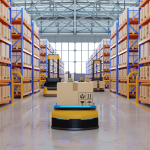As supply chains grow more distributed and demand more dynamic responses, companies are turning to AI-to-AI communication to manage disruptions in real time. By enabling direct machine-to-machine decision-making, this emerging frontier promises faster adjustments, fewer manual handoffs, and smarter resource allocation. But to truly harness this potential, companies must define clear boundaries and maintain rigorous oversight to ensure these digital dialogues reinforce, not replace, human accountability.
Beyond Human Oversight
Modern supply chains are pushing the limits of human coordination. Thousands of moving parts, procurement, warehousing, transportation, must be managed in real time. Even with advanced AI tools, human oversight has been essential for translating data into decisions.
That’s starting to change. A new approach known as AI-to-AI (A2A) communication is emerging. Instead of waiting for humans to interpret outputs and relay instructions, AI models are beginning to talk directly to each other, sharing not just data but operational logic, objectives, and the confidence they place in their own decisions.
For example, if a port congestion delay threatens to disrupt inbound shipments, an AI monitoring real-time port conditions could instantly notify an inventory planning AI to adjust buffer stock levels, while alerting a scheduling AI to rethink warehouse staffing, all without human oversight for every adjustment.
The Competitive Edge in Flexibility
While software integrations have long been part of logistics IT, A2A goes beyond the basics of data exchange. It creates the potential for adaptive, self-correcting operations, especially during disruptions. Companies like Walmart and UPS are already moving in this direction. Walmart is investing in AI systems that provide near-instant visibility across inbound and outbound flows, enabling better coordination across its supplier and transportation networks. UPS, meanwhile, is applying predictive analytics to align capacity with expected market shifts—early steps toward A2A’s promise of dynamic, intelligent response.
These cases hint at a broader shift. Rather than just crunching data, AI systems are starting to manage the flow of decisions themselves.The promise is clear – fewer manual handoffs, faster responses to disruptions, and smarter resource allocation.
A Deliberate Shift in Decision-Making
As AI-to-AI systems become more integrated into supply chain operations, they offer the promise of faster, more adaptive decision-making. Yet their success depends on setting clear parameters that ensure these machine conversations remain aligned with human judgment and operational priorities.
This deliberate shift calls for rigorous oversight. Industry leaders must define the limits of machine autonomy, establish escalation triggers, and keep a clear record of how decisions are made. In the end, the real value of AI-to-AI communication lies not just in efficiency, but in reinforcing resilience and accountability across the supply chain.








